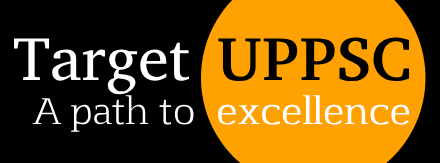AWIP, Science & Technology, Technology
Q. How can India balance the promotion of dual-use technologies with the need for stringent control to prevent misuse?
Introduction:
Dual-use technologies, with their potential for both civilian and military applications, are critical for fostering innovation and ensuring national security. However, their misuse can pose significant threats, including proliferation of weapons, terrorism, and unethical applications. India faces the challenge of leveraging dual-use technologies for economic growth and strategic autonomy while ensuring robust controls to prevent their misuse.
Steps for Balancing Promotion and Control of Dual-Use Technologies
1. Strengthening Domestic Regulatory Frameworks
- Establish Clear Guidelines:
- Develop comprehensive policies for the development, transfer, and use of dual-use technologies.
- Example: India’s export controls under the SCOMET (Special Chemicals, Organisms, Materials, Equipment, and Technologies) list ensure compliance with global non-proliferation norms.
- Regular Audits:
- Conduct regular audits of industries and institutions involved in dual-use technology research to prevent unauthorized activities.
2. Promoting Ethical Development and Use
- Incorporate Ethical Standards:
- Ensure ethical guidelines are integrated into R&D processes, particularly in areas like AI and biotechnology.
- Awareness and Training:
- Provide training to researchers and industry stakeholders on the dual-use nature of technologies and their potential risks.
3. Enhancing International Collaboration
- Participate in Global Regimes:
- Strengthen participation in international frameworks like the Missile Technology Control Regime (MTCR) and the Wassenaar Arrangement to align with global best practices.
- Collaborative Research:
- Collaborate with technologically advanced nations for joint R&D in critical sectors while ensuring technology safeguards.
4. Implementing Robust Export Controls
- Stringent Screening Mechanisms:
- Establish strict mechanisms to vet entities importing or exporting dual-use technologies.
- Digital Tracking Systems:
- Use advanced digital tools to monitor the transfer and usage of sensitive technologies.
5. Encouraging Indigenous Development
- Reducing Import Dependency:
- Invest in indigenous R&D to reduce reliance on foreign dual-use technologies, thereby minimizing external risks.
- Example: Development of Tejas fighter aircraft and Chandrayaan missions showcases India’s progress in self-reliance.
- Promote Private Sector Involvement:
- Encourage public-private partnerships (PPPs) to foster innovation in dual-use sectors.
6. Utilizing Technology Safeguards
- Implement Access Controls:
- Use encryption, secure coding, and access restriction technologies to protect sensitive data and applications.
- Geofencing and Geotracking:
- Apply these tools to ensure dual-use equipment and software are used only for approved purposes.
7. Enhancing Cybersecurity Measures
- Protect Critical Infrastructure:
- Strengthen cybersecurity frameworks to safeguard critical dual-use technology systems from potential cyberattacks.
- Artificial Intelligence Oversight:
- Develop AI governance policies to regulate its dual-use applications.
Case Studies:
- Success:
- India’s nuclear program demonstrates effective balancing, where nuclear technology is used for both energy generation and strategic deterrence under strict regulatory oversight by the Atomic Energy Regulatory Board (AERB).
- Challenge:
- The proliferation risks posed by drone technology highlight the need for more stringent controls to prevent misuse by non-state actors.
Conclusion:
India must adopt a multi-faceted approach to balance the promotion of dual-use technologies with stringent controls. By enhancing regulatory frameworks, fostering ethical innovation, strengthening cybersecurity, and investing in indigenous capabilities, India can ensure that these technologies serve as tools for development and strategic advantage while mitigating risks of misuse. Such a balanced strategy will position India as a global leader in responsibly leveraging dual-use technologies.

